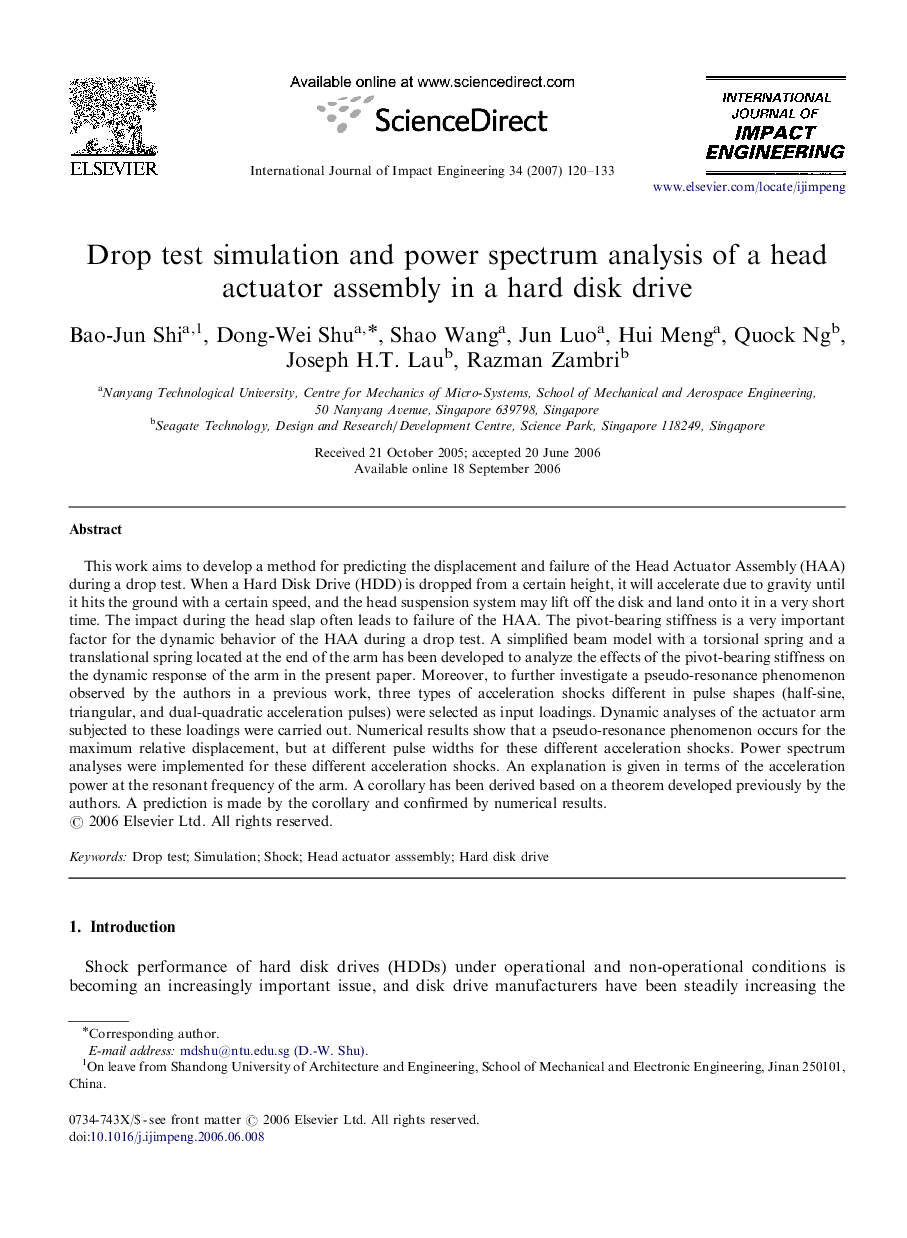| Article ID | Journal | Published Year | Pages | File Type |
|---|---|---|---|---|
| 779825 | International Journal of Impact Engineering | 2007 | 14 Pages |
This work aims to develop a method for predicting the displacement and failure of the Head Actuator Assembly (HAA) during a drop test. When a Hard Disk Drive (HDD) is dropped from a certain height, it will accelerate due to gravity until it hits the ground with a certain speed, and the head suspension system may lift off the disk and land onto it in a very short time. The impact during the head slap often leads to failure of the HAA. The pivot-bearing stiffness is a very important factor for the dynamic behavior of the HAA during a drop test. A simplified beam model with a torsional spring and a translational spring located at the end of the arm has been developed to analyze the effects of the pivot-bearing stiffness on the dynamic response of the arm in the present paper. Moreover, to further investigate a pseudo-resonance phenomenon observed by the authors in a previous work, three types of acceleration shocks different in pulse shapes (half-sine, triangular, and dual-quadratic acceleration pulses) were selected as input loadings. Dynamic analyses of the actuator arm subjected to these loadings were carried out. Numerical results show that a pseudo-resonance phenomenon occurs for the maximum relative displacement, but at different pulse widths for these different acceleration shocks. Power spectrum analyses were implemented for these different acceleration shocks. An explanation is given in terms of the acceleration power at the resonant frequency of the arm. A corollary has been derived based on a theorem developed previously by the authors. A prediction is made by the corollary and confirmed by numerical results.
